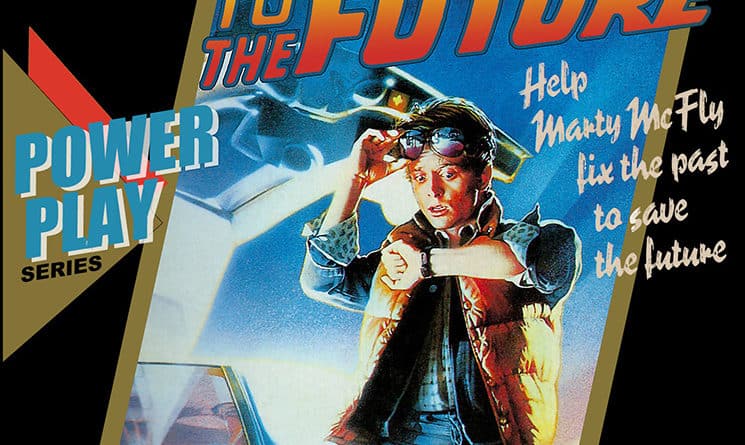“Back to the Future”
(Nintendo)
Thirty years ago this summer, “Back to the Future” debuted in theaters. The massive hit led to two more films, an animated series, and a theme-park ride. It made Michael J. Fox an even bigger star and further cemented Christopher Lloyd’s reputation as an eccentric character actor. It was the highest-grossing film of 1985. President Reagan quoted the film in his subsequent State of the Union Address the following year. Later this year, “Back to the Future: The Musical” will premiere in London. How did Hill Valley conquer stage, screen, and amusement park, but continually strike out when it came to video game adaptations? To understand, we need to go back — in time.
1985: “Back to the Future” (Electric Dreams Software) is released for the Commodore 64. The designers rush the production so the game will be out when the film premieres. The good news? They succeed — the game is finished in less than two months. The bad news? It shows. The game is an incoherent mess.
1989: “Back to the Future” (LJN) debuts for Nintendo, coinciding with the release of “Back to the Future II” that summer. Trilogy screenwriter Bob Gale repeatedly asks LJN to include his input on the plot. They refuse. The result? One of the most critically derided film-to-video game adaptations this side of “E.T.,” a game that owes more to the NES classic “Paperboy” than the movies. Gale calls it “one of the worst games ever.” He is not wrong.
1990: “Back to the Future II & III” (LJN) seems to learn from its predecessor’s mistakes. This two-for-one adaptation allows players to use the DeLorean to travel between key dates from the trilogy. The designers took more time with this installment, which features massively upgraded graphics, music, and plot, along with better play control. The lengthy game demands at least five hours to complete. That wouldn’t be a problem, except for the game’s lack of a password or save option, which makes it a frustrating exercise in stamina.
1991: “Back to the Future III” (Image Works) wants so badly to be good. The jump to the Sega Genesis improved the sound and graphic quality of Doc Brown and Marty’s adventures in the Wild West version of Hill Valley and alternated between several styles of gameplay, including side-scrolling and first-person shooter. In adapting the weakest of the three films, the designers throw in everything but the kitchen spittoon, making the game cluttered and confusing.
2010: “Back to the Future: The Game” (Telltale Games) finally achieves the 1.21 gigawatts of power necessary to assemble a fantastic game for the Wii and Playstation 3. This time the focus is on the McFly family in the 1930s, though the game stays true to the original trilogy. Telltale, who adapted “Game of Thrones” and “The Walking Dead” as games, bring their high standards to the project. And, 20 years after begging LJN to listen to him, Gale serves as one of the co-writers of the project, along with Lloyd and Fox, who provide the voices for their iconic characters. It took 25 years for the beloved franchise to finally receive a video game worthy of its reputation.

